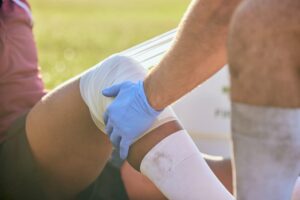
In today’s fast-paced world, where multitasking has become the norm, distracted driving is emerging as one of the most pressing public safety issues. With technology offering constant connectivity, the temptation to check a message, send a text, or even browse social media while driving is ever-present. However, this seemingly innocent behavior can lead to devastating consequences. Like impaired driving, distracted driving endangers not only the driver but also passengers, other motorists, and pedestrians. Understanding the dangers associated with distracted driving and its relationship to impaired driving is crucial for creating safer roads and saving lives.

Common examples of distracted driving include texting, talking on the phone, adjusting the GPS, and eating while behind the wheel of a vehicle. The statistics surrounding distracted driving are alarming. According to the National Highway Traffic Safety Administration (NHTSA), distracted driving is responsible for more than 10,000 fatalities per year. This number, though significant, likely underestimates the true impact, as distraction is often underreported in crash data. Young drivers are particularly at risk, with drivers aged 15 to 20 being more likely to be involved in fatal crashes related to distracted driving.
Among all the distractions, texting while driving is often considered the most dangerous. Sending or reading a text takes a driver’s eyes off the road for an average of 5 seconds. At 55 mph, that’s like driving the length of a football field with your eyes closed.
The impact of texting while driving is profound. Research has shown that texting drivers are 23 times more likely to be involved in a crash than non-distracted drivers. The danger is so significant that many states have enacted laws banning texting while driving, and public awareness campaigns continue to emphasize the risks.
At first glance, distracted driving and impaired driving may seem like separate issues. However, they share many similarities in terms of the risks they pose and the underlying behaviors that contribute to them.
The attorneys at Marcus & Mack have joined a national campaign that is designed to address the dangers of distracted driving. The program, entitled “End Distracted Driving,” or EndDD for short, was created after a Philadelphia-based attorney lost his 21-yearold daughter in a crash that was caused by a distracted driver. Marcus & Mack is among the group of attorneys who are committed to educating new drivers about the very real risks associated with distracted driving. This program, which has been provided to schools across the U.S. and Canada, has reached audiences of more than 528,000 people since 2012. Every day, our firm sees the devastation caused by distracted driving, and we are committed to reducing these types of accidents through education.
 For many high school students fall not only means a return to class but a return to the field. Whether it’s for the school team or an intramural league; whether football, cheerleading, soccer, field hockey or any other sport; knowing how to minimize the chance of injury is vitally important. You know what they say about an ounce of prevention, right?
For many high school students fall not only means a return to class but a return to the field. Whether it’s for the school team or an intramural league; whether football, cheerleading, soccer, field hockey or any other sport; knowing how to minimize the chance of injury is vitally important. You know what they say about an ounce of prevention, right?
In the weeks before classes start many athletes are already taking to the practice field. Two-a-days are tough for any athlete; for teenagers they can be dangerous. The number one way to stay safe on a hot afternoon is to stay hydrated. Athletes should make sure to drink plenty of fluids (without caffeine!) and watch for warning signs of heat-related problems, such as dark-colored urine, fatigue, dizziness, headaches, nausea, cramps, excessive sweating or a cessation of sweating. If one experiences any of these symptoms, they should immediately take a break to cool down and rehydrate.
A general way to lessen the chances of athletic injury is to have a warm-up and cool-down routine. Coaches should work with athletes to develop such routines. Coaches should also be encouraging athletes to train during the offseason. Showing up in shape will benefit in many ways, including making injuries less likely.
Properly fitting pads and helmets are another key to injury prevention. Make sure to have any protective equipment fitted at purchase. If you suspect an improper fit, ask the coach to take a look. While no helmet or pad can completely protect against injury, a proper fit will minimize the risk of serious injuries like concussions.
When it comes to your home, preventing problems is much cheaper than fixing them. That’s why it is important to watch for warning signs of possible damage and take care of any problems before they become catastrophes. One of the most common causes of serious home damage is water. Below are three things to watch for so you can make sure your home is protected for the long term.
Nothing says autumn like a colorful pile of fallen leaves. They seem innocent enough but unexpected danger can be found in the roadside leaf pile or on a slippery street just after it rains. Kids, parents and pets all love to jump in a freshly raked pile of leaves which means drivers must be aware of the potential dangers.
With more municipalities collecting leaves piled along the side of the road accidents have the potential to increase. Children or objects may be hidden in the pile of leaves on the side of the road so never run over these piles. In addition to causing a serious injury, wet, matted-down leaves can be very slippery causing dangerous conditions on the roadway which can lead to accidents.
To ensure safety, drivers should be cautious and vigilant when leaves are falling. When passing leaf piles never drive straight through them. Anyone who wants to enjoy the simple pleasure of jumping into a pile of leaves should only do so if the pile is in the yard far from the road. Enjoy the beauty of Autumn and stay safe.
 Personal injury claims remain among the most common cases in civil litigation. Situations that require legal representation from a personal injury attorney happen every day. These can include car crashes, slips and falls, dog bites and workplace accidents. Both pursuing and opposing legal teams are using social media as evidence to support, reduce or discredit personal injury claims.
Personal injury claims remain among the most common cases in civil litigation. Situations that require legal representation from a personal injury attorney happen every day. These can include car crashes, slips and falls, dog bites and workplace accidents. Both pursuing and opposing legal teams are using social media as evidence to support, reduce or discredit personal injury claims.
Social media evidence refers to data documented from online platforms. This can be photos, posts, videos or other digital footprints a user leaves behind on social media networks.
People continue to communicate and share their experiences on their social media accounts. This information available online enables insurance companies to embrace social media research when investigating claims.
Any statement, photo or video on social media contradicting your testimony could hurt your ability to obtain compensation. If you claim to be in severe pain, but your social media post portrays otherwise, an insurer or the defendant’s attorney may use that information to argue your injuries do not impact your ability to undertake everyday living activities.
Marcus & Mack
